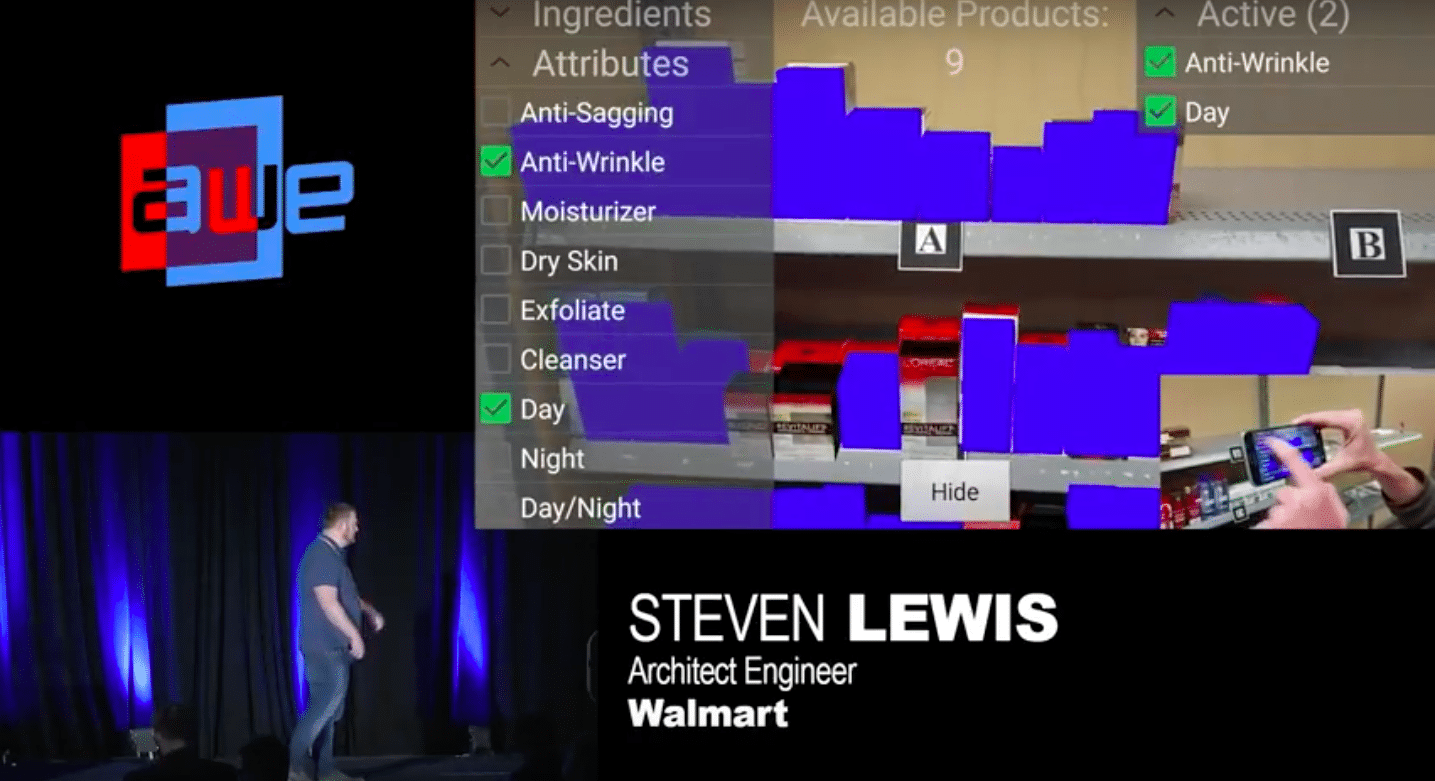
XR Talks is a weekly series that features the best presentations and educational videos from the XR universe. It includes embedded video, as well as narrative analysis and top takeaways. Speakers’ opinions are their own.
It’s rare that we get to hear from XR’s buy side. Compared to XR tech providers (which are also valuable), these are the brands, enterprises and retailers that have adopted AR and VR and are at various stages of deployment. The latest comes from Walmart’s talk at AWE (below).
Walmart architect engineer Steven Lewis acknowledges various flavors of retail AR including product visualization (think: cosmetics) and store navigation. But the success factor that cuts across them is utility and repeat engagement, rather than UX built solely on novelty (we agree).
“What if you as a marketer show them a really cool product through AR, but then they see it and they’re done, so it was a one-time use?” posed Lewis on stage. “What you want to do is make experiences that they can use over and over and it’s useful to them.”

Applying that principle, Lewis’ thesis is that though most shopping happens offline, the e-commerce experience is superior in lots of ways, such as being able to dynamically search and filter product attributes. So AR’s utility can come into play in combining the best of both worlds.
So as a proof of concept, it built an AR prototype app on commodity hardware in three weeks. The app, when pointed at a shelf of cosmetic products, allows the user to filter attributes (price, colors, ratings), similar to an e-commerce experience. It then highlights items that match the filter criteria.
“When I say ‘physical to digital’ I mean it literally: smash them together, “said Lewis. “We partnered with L’Oreal in the very SKU-intensive area of skin care. You choose filter criteria and it narrows down and filters out what you don’t want to see. That’s kind of like an e-commerce experience.”

This of course requires back-end development, but meanwhile is useful as a front-end proof of concept. There are also benefits beyond the UX. For example, the AR in-aisle engagement can provide analytics to retailers that inform everything from inventory management to optimal layouts.
“There’s lots of analytics you can get as a retailer or brand when you actually have someone with a mobile device, or headset in the future, looking at your products,” said Lewis. “Retailers today try to guess your dwell time… there could be a whole lot of [AR] analytics that would be helpful.”
Of course, typical challenges await. Just like the AR Cloud, data and object recognition will be key. And sku-intensive areas like cosmetics contain several product variations and images. In other words, the same factors that make it prime for AR visualization make it a data challenge.

Once these challenges are hammered out, Lewis envisions a day when more AI is brought to the fold. This includes natural language processing. For example, instead of searching/filtering fishing lures by name, AR will gain value when you can just say what kind of fish you want to catch.
“Think of different ways to use your product or get information that normally a human would ask,” said Lewis. “For instance, if I was in the aisle asking someone what’s the fishing lure to catch large mouth bass? If there’s a defined criteria that’s very specific… put that in your item file data.”
This all goes back to utility. A key guiding principle for AR that’s truly useful and drives recurring engagement is to design experiences for everyday people. This also invokes a fundamental success factor in XR and tech in general: solve human problems, not engineering ones.
“You don’t want to build something and spend millions of dollars and it’s a one-time experience,” said Lewis “That one-time experience may be amazing… but we try to make sure that we build it so it works for everyone — not just the one-time use but for continuous use.”
For deeper XR data and intelligence, join ARtillry PRO and subscribe to the free ARtillry Weekly newsletter.
Disclosure: ARtillry has no financial stake in the companies mentioned in this post, nor received payment for its production. Disclosure and ethics policy can be seen here.
Header image credit: Aisle411
